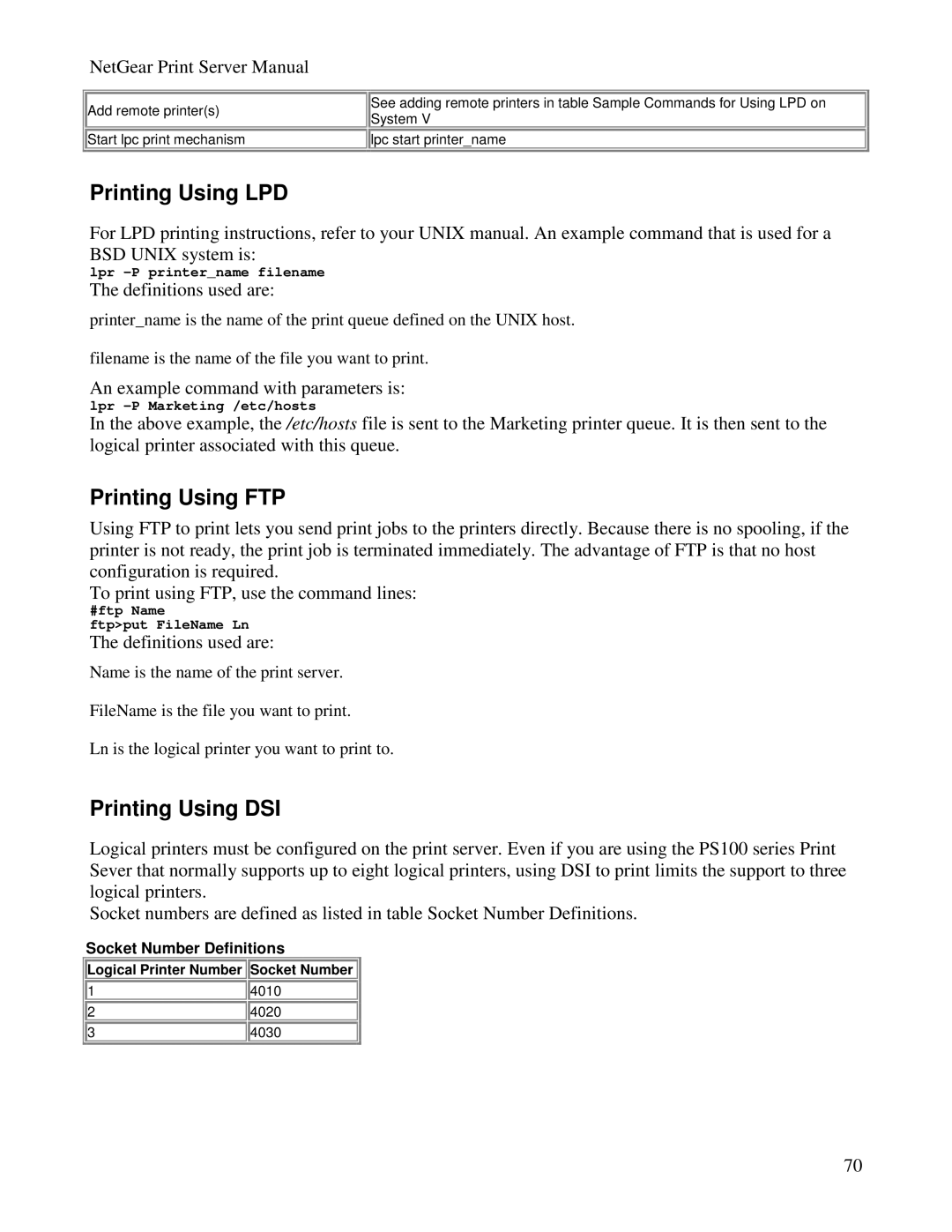
NetGear Print Server Manual
Add remote printer(s)
![]() Start lpc print mechanism
Start lpc print mechanism
See adding remote printers in table Sample Commands for Using LPD on System V
![]()
![]() lpc start printer_name
lpc start printer_name
Printing Using LPD
For LPD printing instructions, refer to your UNIX manual. An example command that is used for a BSD UNIX system is:
lpr
The definitions used are:
printer_name is the name of the print queue defined on the UNIX host.
filename is the name of the file you want to print.
An example command with parameters is:
lpr
In the above example, the /etc/hosts file is sent to the Marketing printer queue. It is then sent to the logical printer associated with this queue.
Printing Using FTP
Using FTP to print lets you send print jobs to the printers directly. Because there is no spooling, if the printer is not ready, the print job is terminated immediately. The advantage of FTP is that no host configuration is required.
To print using FTP, use the command lines:
#ftp Name
ftp>put FileName Ln
The definitions used are:
Name is the name of the print server.
FileName is the file you want to print.
Ln is the logical printer you want to print to.
Printing Using DSI
Logical printers must be configured on the print server. Even if you are using the PS100 series Print Sever that normally supports up to eight logical printers, using DSI to print limits the support to three logical printers.
Socket numbers are defined as listed in table Socket Number Definitions.
Socket Number Definitions
Logical Printer Number 
 Socket Number
Socket Number
![]() 1
1![]()
![]() 4010
4010
![]() 2
2![]()
![]() 4020
4020
![]()
![]() 3
3![]()
![]() 4030
4030
70
